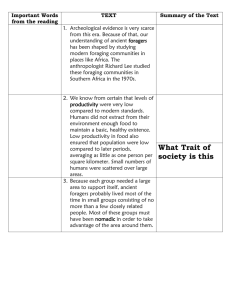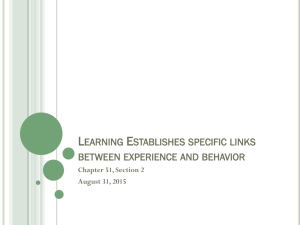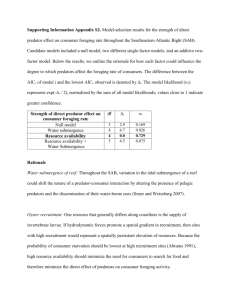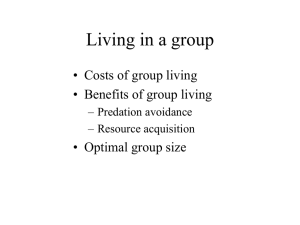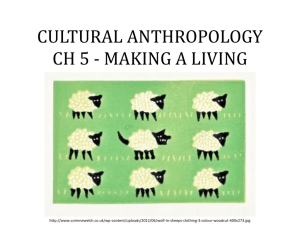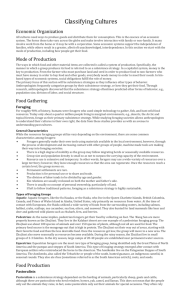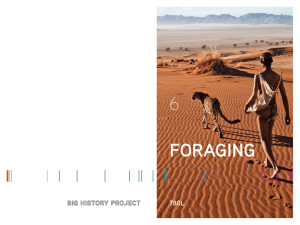Agricultural Revolution
advertisement
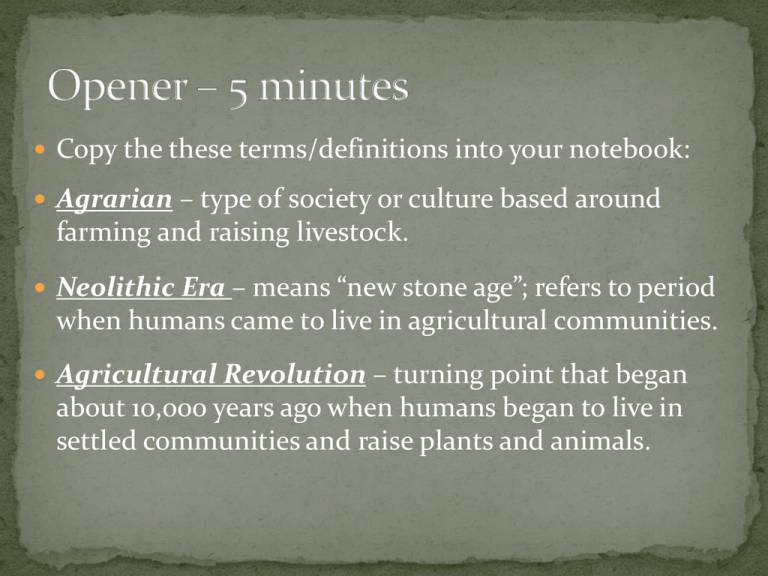
Copy the these terms/definitions into your notebook: Agrarian – type of society or culture based around farming and raising livestock. Neolithic Era – means “new stone age”; refers to period when humans came to live in agricultural communities. Agricultural Revolution – turning point that began about 10,000 years ago when humans began to live in settled communities and raise plants and animals. What were the key features of foraging communities? What would a day in the life for someone living in a foraging community? What tools would they have used? What type of activities would be the most important during the day? What type of home would they have had? How big would a community be and who would be in it? What questions do you still have about humans in the foraging era? For much of the Paleolithic Age the Earth was cold. Much of the landmasses were tundra. About 15,000 years ago, a “Great Thaw” occurred. During the “Great Thaw”: Glaciers shrank Sea levels rose Continental shelves disappeared Temperatures increased Plants, forests, and large expanses of vegetation grew With more vegetation, animals began to flourish. So many natural resources that humans began to settle for long periods of time. What changes the “Great Thaw” might have helped produce for humans? Look at the artifacts that were found near the Dnieper and Dneister Rivers. What do you think these artifacts are? What observations helped you make this guess? Do the items look heavy? Do you think the items would be difficult to carry over long distances? Work with a partner to answer the remaining questions on the worksheet. These artifacts come from settled, farming (agrarian) communities. The artifacts represent our first historical “turning point” in this class. A shift from most people foraging to most people farming. We will be examining the Agricultural Revolution. A time when some foraging humans began to farm and settle in one place for very long periods of time. Began about 10,000 years ago. Changes were gradual and took place over thousands of years. People in some areas intensified their use of one spot to find, and gradually, produce food. This shift was not a conscious choice made by one group of people, but something that unfolded over a long period of time. Look at the World History Timeline in your booklet. What eras are covered in this timeline? Era of Foragers Agrarian Era Industrial Era According to the timeline, what “turning point” in World History will we be examining? Work with a partner to complete all the questions on the “World History Timeline Interpretation Guide”. What is your favorite fruit or vegetable? How long do you think people have been growing and eating these products? You are now going to explore some of the first crops ever purposefully cultivated by humans. Work with a partner to complete the handout. Answer the following questions: Include at least 2 pieces of evidence from your handouts, notes or textbook to support each of your answers. What is needed for humans to live as foragers? What would humans need to live in a village? What environmental changes might have changed how humans lived? If humans spent nearly 200,000 years living as foragers, why did they begin farming and staying in one place?
